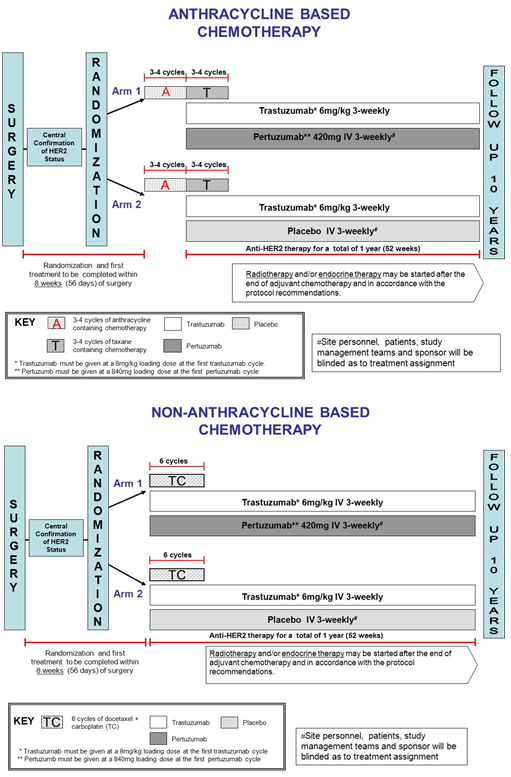BIG 4-11 (APHINITY): Herceptin® plus pertuzumab adjuvant study
ClinicalTrials.gov Identifier:NCT01358877
Sponsor
Hoffmann-La Roche
Key Collaborators
Breast International Group
Genentech, Inc.
Frontier Science Scotland
Aim
To test whether dual blockade of HER2 with combination Herceptin® and pertuzumab given in conjunction with standard cytotoxic chemotherapy improves invasive disease-free survival and overall survival compared to single blockade with Herceptin® in patients with HER2 positive early breast cancer.
Expected added Value
The combination of Herceptin® and pertuzumab has shown impressive results in patients with metastatic breast cancer, improving disease-free and overall survival(1). In the neoadjuvant setting, the HER2 dual blockade dramatically increased the rate of pathologic complete response in comparison to each drug alone(2). Such impressive results are the rationale to test the combination of these two anti-HER2 drugs in the adjuvant setting. The results from the APHINITY trial could possibly improve cure rates for patients with HER2 positive early breast cancer and change clinical practice.
Recruitment
Recruitment was closed in November 2011 and recruited 4,805 patients in less than three years.
Trial Ongoing
- The trial has completed recruitment and awaiting primary analysis
Tissue collection for translational research linked to the APHINITY trial
BrEAST has experience from previous trials in collecting and storing samples for translational research. The objectives of the APHINITY trial are to collect, store, and analyse breast cancer tissue and blood from patients included in the trial, to allow the identification of molecular characteristics that are associated with the differential likelihood of response, safety issues, or that allow detection of residual or relapsing disease. The translational research related to the APHINITY trial is expected to help identify protein, genetic, and molecular factors that might lead to new targets for the treatment of breast cancer or to a better understanding of the disease and safety profile. This in turn can improve treatment strategies, enhance prevention, and/or lead to cure.
Design

